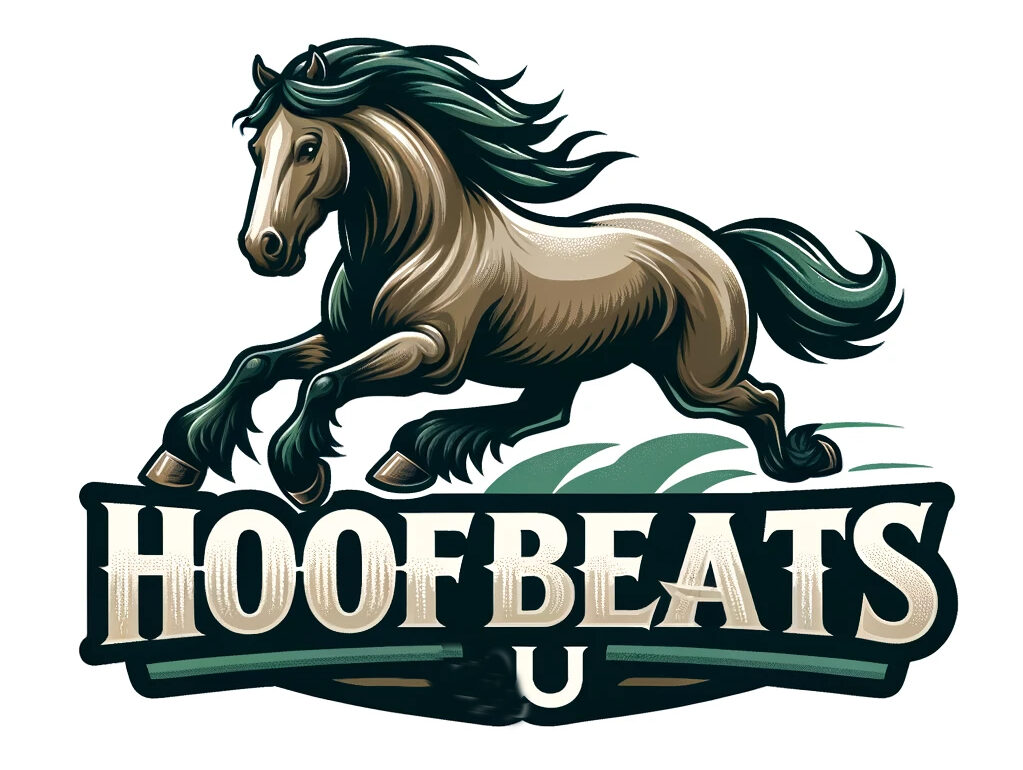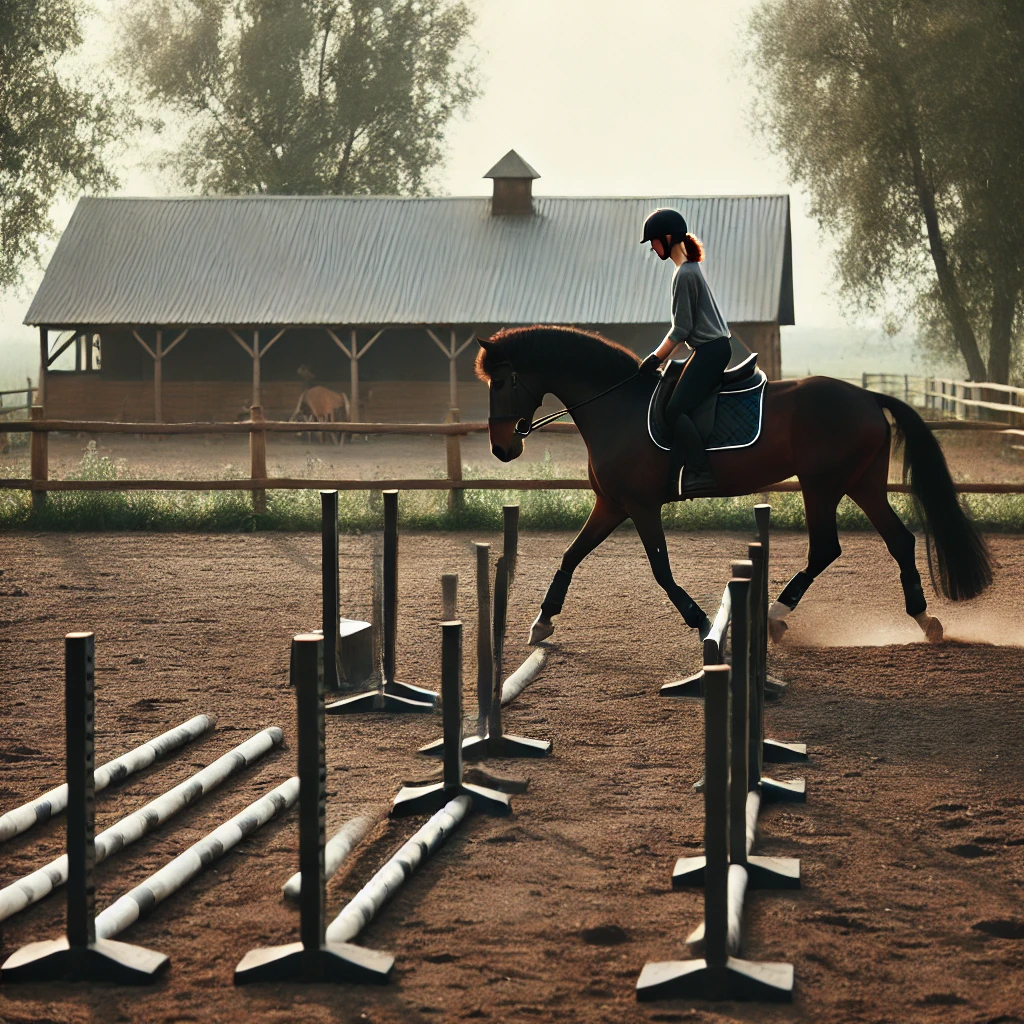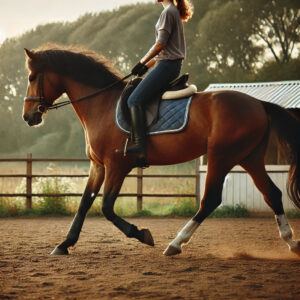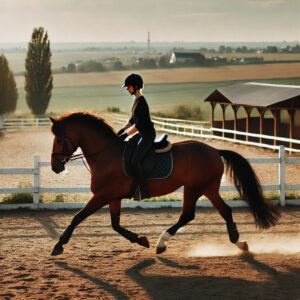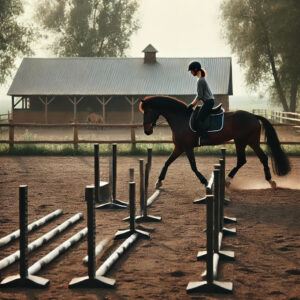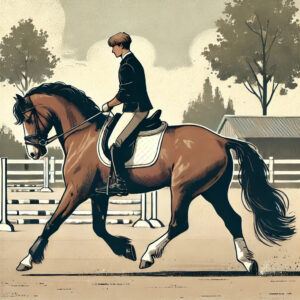Progressing to More Advanced Skills and Exercises in Horse Training
Once your horse has mastered the basics, it’s time to introduce more advanced skills to keep them engaged and motivated. Advanced training challenges your horse’s abilities and helps develop a well-rounded and responsive animal. Here’s a detailed explanation of the key advanced exercises, including how to break them down into smaller steps and reward progress.
1. Trotting
Understanding Trotting: Trotting is a two-beat gait where the horse’s diagonal pairs of legs move together. It’s a faster and more rhythmic movement than walking and is a fundamental skill in horse training.
Steps to Train Trotting:
- Start with a Warm-Up: Begin with a 10-15 minute warm-up at a walk to loosen your horse’s muscles.
- Introduce Trotting: Encourage your horse to move into a trot from a walk. Use gentle pressure with your legs and maintain a steady rein contact.
- Practice Transitions: Practice transitioning between walk and trot. This helps your horse understand the cues for trotting and builds their confidence.
- Maintain Rhythm: Focus on maintaining a consistent rhythm and speed. Use your body position and rein contact to guide your horse.
Rewarding Progress:
- Immediate Rewards: Praise and pat your horse immediately after they transition into a trot correctly.
- Breaks and Treats: Give your horse short breaks and occasional treats to keep them motivated and prevent fatigue.
2. Cantering
Understanding Cantering: Cantering is a three-beat gait that’s faster than a trot but slower than a gallop. It requires balance and coordination, making it a crucial skill for advanced training.
Steps to Train Cantering:
- Establish a Strong Trot: Ensure your horse is comfortable and balanced at a trot before introducing the canter.
- Cue for Canter: Use your inside leg to apply pressure just behind the girth while giving a slight squeeze with your outside leg. This signals your horse to transition into a canter.
- Start on a Circle: Begin cantering on a large circle. This helps your horse maintain balance and control.
- Gradually Increase Duration: Start with short canter intervals and gradually increase the duration as your horse becomes more comfortable.
Rewarding Progress:
- Positive Reinforcement: Use verbal praise and gentle pats to reinforce good behavior.
- Rest Periods: Allow your horse to rest and relax between canter sessions to avoid overexertion.
3. Lateral Movements
Lateral movements, such as side-passing, involve your horse moving sideways. These exercises improve flexibility, balance, and responsiveness.
Understanding Side-Passing: Side-passing requires your horse to move laterally, crossing one leg over the other while maintaining a straight body.
Steps to Train Side-Passing:
- Introduce the Concept: Start by teaching your horse to yield to pressure from your leg. Use a fence or wall to guide their movement.
- Use Groundwork: Practice side-passing on the ground using a halter and lead rope. Apply gentle pressure to encourage lateral movement.
- Mount Up: Once your horse understands the concept on the ground, mount up and use your legs and reins to guide them. Apply pressure with one leg while keeping the other leg neutral.
- Practice Both Sides: Ensure you practice side-passing in both directions to develop balanced muscle and coordination.
Rewarding Progress:
- Immediate Praise: Offer immediate praise and a gentle pat when your horse correctly executes a side-pass.
- Short Sessions: Keep training sessions short and end on a positive note to keep your horse motivated.
4. Pole Work and Jumping
Understanding Pole Work: Pole work involves your horse stepping over ground poles, which helps improve coordination and strength.
Steps to Train Pole Work:
- Introduce Ground Poles: Start with a single ground pole and encourage your horse to step over it. Use gentle guidance and praise.
- Increase Difficulty: Gradually add more poles and vary their spacing to challenge your horse’s stride and coordination.
- Introduce Raised Poles: Once your horse is comfortable with ground poles, introduce raised poles to increase the difficulty.
Understanding Jumping: Jumping involves your horse leaping over obstacles. It requires strength, coordination, and confidence.
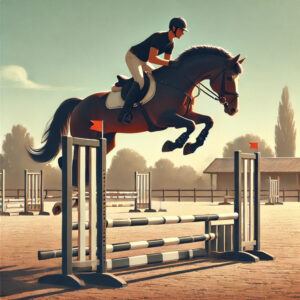
Steps to Train Jumping:
- Start with Small Jumps: Begin with small cross-rails or cavaletti jumps to build your horse’s confidence.
- Focus on Technique: Ensure your horse approaches the jump straight and maintains a steady rhythm.
- Gradually Increase Height: Gradually increase the height and complexity of the jumps as your horse becomes more proficient.
Rewarding Progress:
- Consistent Praise: Offer consistent praise and treats for successful pole work and jumping attempts.
- Positive Reinforcement: Use positive reinforcement to build your horse’s confidence and enthusiasm for jumping.
5. Collection and Extension
Understanding Collection and Extension: Collection involves your horse shortening their stride and engaging their hindquarters, while extension involves lengthening their stride.
Steps to Train Collection and Extension:
- Start with Basics: Ensure your horse is comfortable with basic gaits before introducing collection and extension.
- Use Transitions: Practice transitions between collected and extended gaits to help your horse understand the difference.
- Focus on Balance: Maintain a balanced seat and use gentle rein and leg aids to guide your horse.
Rewarding Progress:
- Immediate Feedback: Offer immediate feedback through praise and gentle rein release when your horse correctly performs collection or extension.
- Short Sessions: Keep training sessions short and varied to maintain your horse’s interest.
Conclusion
Progressing to more advanced skills and exercises in horse training is an exciting journey that builds on the foundational basics. By introducing trotting, cantering, lateral movements like side-passing, pole work, jumping, and collection and extension, you can challenge your horse’s abilities and keep them engaged and motivated. Remember to break down each exercise into smaller steps, provide consistent rewards, and maintain a positive and patient approach to training. With dedication and practice, you’ll develop a well-rounded and responsive horse capable of performing advanced maneuvers with confidence and grace.
